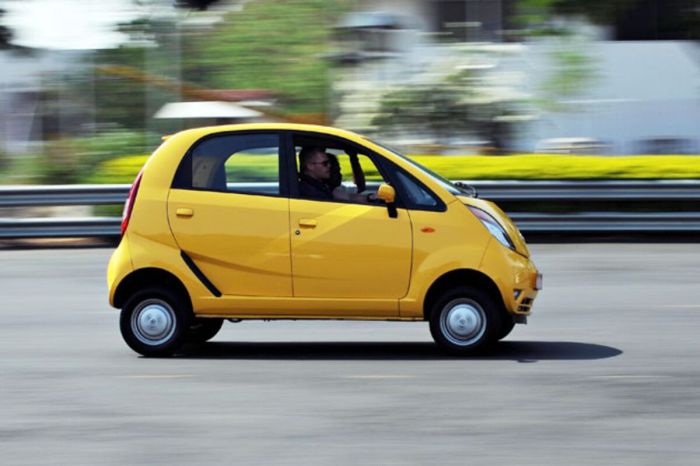Best Price to Buy a New Car A Comprehensive Guide
Understanding “Best Price”
Best price to buy a new car – Securing the best price for a new car requires a nuanced understanding of various factors beyond the manufacturer’s suggested retail price (MSRP). This involves recognizing hidden costs, mastering negotiation techniques, and understanding market dynamics.
Factors Influencing Car Prices Beyond MSRP
The MSRP is merely a starting point. Several factors inflate the final price. These include dealer markup (the profit the dealership adds to the MSRP), destination charges (fees for transporting the vehicle to the dealership), and various optional packages or add-ons that can significantly increase the overall cost.
Hidden Fees and Additional Costs, Best price to buy a new car
Beyond the obvious, be aware of hidden fees like dealer preparation fees (for cleaning and detailing), document fees (administrative charges for paperwork), and extended warranty packages that often inflate the total price. Financing fees, including interest rates and loan origination fees, also contribute to the final cost.
Strategies for Effective Car Price Negotiation
Effective negotiation involves thorough research, a firm understanding of your budget, and a willingness to walk away if the deal isn’t favorable. Armed with knowledge of comparable prices from other dealerships and online resources, you can leverage this information to negotiate a lower price. Being polite but assertive is key.
Average Transaction Price vs. MSRP Comparison
The following table illustrates the discrepancy between average transaction prices and MSRPs for popular car models. Note that these are averages and can vary based on location, time of year, and specific vehicle configuration.
| Model | MSRP | Average Transaction Price | Difference |
|---|---|---|---|
| Toyota Camry | $25,000 | $27,500 | $2,500 |
| Honda Civic | $22,000 | $24,000 | $2,000 |
| Ford F-150 | $35,000 | $40,000 | $5,000 |
| Chevrolet Silverado | $33,000 | $38,000 | $5,000 |
Timing Your Purchase
The timing of your purchase significantly impacts the price you pay. Seasonal sales, promotional events, and the position within the model year cycle all play a crucial role.
Impact of Seasonal Sales and Promotional Events
Dealerships often run sales and promotions tied to holidays, end-of-year clearances, or manufacturer incentives. These periods can offer significant discounts. However, be aware that high demand during these periods might negate some of the savings.
Advantages and Disadvantages of Buying at Different Times of the Model Year
Buying at the end of the model year often yields better deals as dealerships try to clear out inventory for the new models. Conversely, buying at the beginning of the model year means you get the latest features, but prices tend to be higher.
Factors Indicating a Good Time to Negotiate
High dealership inventory levels often indicate a seller’s market, creating opportunities for better negotiation. Economic downturns or slow sales periods also typically result in more flexible pricing.
Best Months to Buy a New Car
- November
- December
- January
- September
These months historically see higher discounts and promotional offers due to year-end clearances and the start of new model year cycles.
Researching and Comparing Prices
Thorough research is paramount to securing the best deal. This involves comparing prices across multiple dealerships and using online tools to inform your negotiation strategy.
Comparing Prices Across Dealerships and Regions
Contact multiple dealerships within your region and beyond to compare prices. Websites and online forums can provide insights into average transaction prices for specific models in your area.
Using Online Car Pricing Tools and Websites
Websites like Kelley Blue Book (KBB), Edmunds, and TrueCar provide valuable information on MSRP, average transaction prices, and dealer reviews. These tools empower you with data-driven insights for negotiation.
Car Brokers vs. Direct Dealership Purchases
Car brokers can negotiate on your behalf, potentially securing better deals due to their expertise and volume purchasing power. However, this comes at a cost, typically a broker fee.
Features and Benefits of Online Car Buying Platforms
| Platform | Features | Pros | Cons |
|---|---|---|---|
| TrueCar | Price transparency, dealer network | Easy price comparison | Limited customization options |
| Edmunds | Reviews, pricing data, buying guides | Comprehensive information | Can be overwhelming for beginners |
| Kelley Blue Book (KBB) | Pricing data, valuation tools | Accurate valuation estimates | Less focus on dealer connections |
Financing and Incentives
Understanding financing options and manufacturer incentives is crucial to minimizing the overall cost of your new car. These factors can significantly impact your monthly payments and the total amount you pay over the life of the loan.
Finding the best price for a new car often requires diligent research. A key aspect of this involves comparing models and dealerships; for instance, you might want to check the current pricing for a specific model like the versa new car price to see how it stacks up against competitors. Ultimately, securing the best deal depends on a combination of timing, negotiation, and thorough market analysis.
Impact of Financing Options on Overall Cost
Loans typically involve higher overall costs due to interest payments. Leases usually have lower monthly payments but require adherence to mileage limits and other restrictions. The choice depends on your financial situation and driving habits.
Manufacturer Incentives and Rebates
Manufacturers often offer rebates, low-interest financing, or other incentives to boost sales. These can significantly reduce the purchase price or monthly payments. Check the manufacturer’s website and dealership for current offers.
Leveraging Financing Options and Incentives
By combining low-interest financing with manufacturer rebates, you can significantly reduce the overall cost of your car. Negotiate these aspects alongside the purchase price for the best overall deal.
Calculating Total Cost of Ownership

Source: bwbx.io
The total cost of ownership includes the purchase price, financing costs, insurance premiums, fuel expenses, maintenance, and potential depreciation. Consider these factors when making your decision.
Understanding the Dealership Process
Navigating the dealership process requires awareness of common tactics and effective negotiation strategies. Preparation and knowledge are your best allies in securing a favorable deal.
Steps Involved in Negotiating a Car Purchase
The process typically involves researching prices, visiting dealerships, negotiating the price, securing financing, and finalizing the paperwork. Each step requires careful consideration and a strategic approach.
Common Dealership Tactics and Strategies
Dealerships may employ various tactics, such as focusing on monthly payments rather than the total price, adding unnecessary add-ons, or pressuring you into making a quick decision. Remain informed and assertive.
Effective Negotiation Techniques
Effective negotiation involves presenting a reasonable offer based on your research, being prepared to walk away, and focusing on the total price rather than monthly payments. Maintain a calm and respectful demeanor.
Flowchart Illustrating the Car Buying Process
The process can be visualized as a flowchart: Start with Research & Price Comparison -> Visit Dealerships & Negotiate Price -> Secure Financing -> Finalize Paperwork & Take Delivery. Each step may involve several sub-steps, but this Artikels the main flow.
Beyond the Sticker Price: Best Price To Buy A New Car
The long-term costs of vehicle ownership extend far beyond the initial purchase price. Understanding depreciation, fuel efficiency, and maintenance costs is crucial for making an informed decision.
Long-Term Costs of Vehicle Ownership
Fuel costs, insurance premiums, maintenance expenses (oil changes, repairs, tire replacements), and potential unexpected repairs all contribute to the total cost of ownership. Factor these expenses into your budget.
Impact of Vehicle Depreciation

Source: hotcarsimages.com
Cars depreciate in value over time. This depreciation can be substantial, especially in the first few years. Understanding the depreciation rate of different models helps you make an informed decision.
Factors Affecting Resale Value
Factors such as make, model, mileage, condition, and maintenance history influence a car’s resale value. Well-maintained vehicles with lower mileage generally retain their value better.
Depreciation Rates of Different Car Types Over 5 Years
Imagine a graph. A line representing a luxury car shows steep initial depreciation, then levels off. A line for a reliable sedan shows moderate, consistent depreciation. A line for a truck shows slower depreciation, but still significant over five years. This illustrates how different vehicle types depreciate at varying rates.
FAQ Overview
What is MSRP, and why is it often not the final price?
MSRP stands for Manufacturer’s Suggested Retail Price. It’s a starting point, not a fixed price. Dealerships often add fees (destination charges, dealer prep fees, etc.) and have room to negotiate.
How much should I expect to negotiate?
Negotiation depends on the vehicle, market conditions, and your negotiating skills. Aim for a few hundred to a few thousand dollars off the sticker price, depending on the situation. Research beforehand to understand the fair market value.
What’s the best way to check a car’s history?
Use a vehicle history report service like Carfax or AutoCheck to obtain a comprehensive report detailing accidents, maintenance records, and title issues.
When is the best time to trade in my old car?
Dealerships are often more willing to offer better trade-in values when they have high inventory and want to move used cars quickly. Consider timing your trade-in with your new car purchase.




















